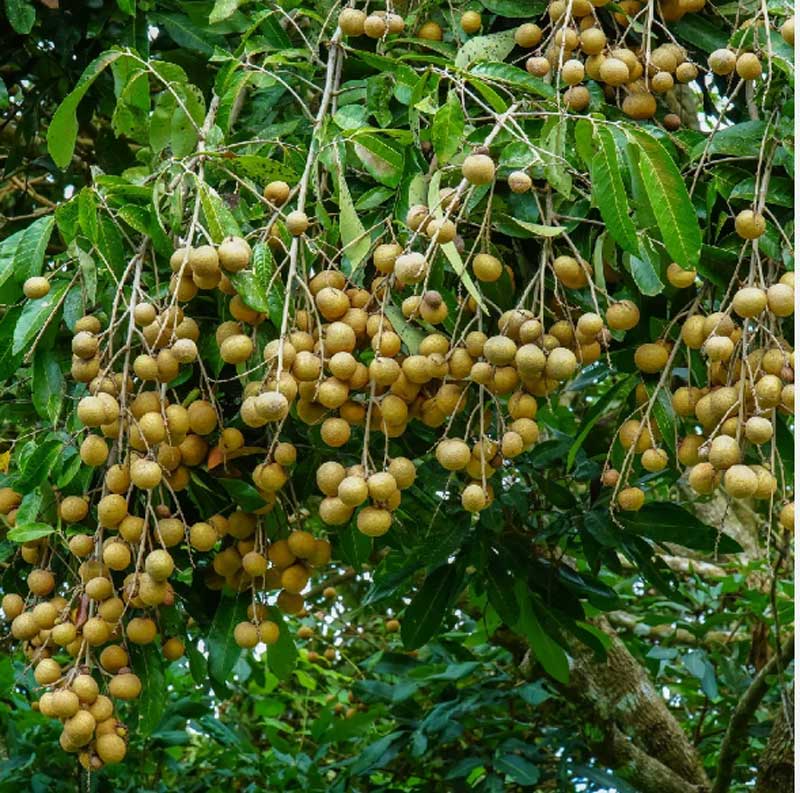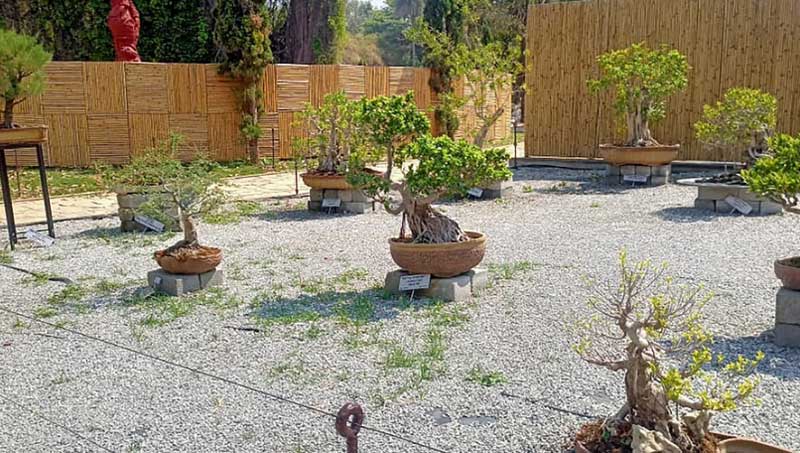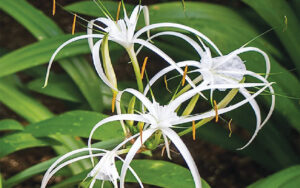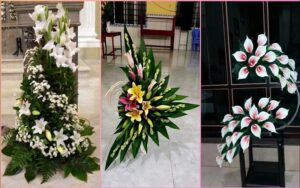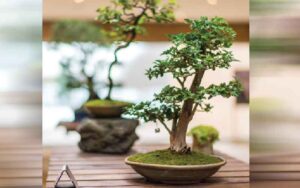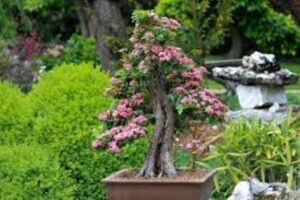Nagiere : An Ikebana, A Poetry of Nature in its Simplest Form
Dr. Alka Singh
Principal and Dean
ASPEE College of Horticulture, Navsari Agricultural University, Navsari, Gujarat
A bud blooms…
Petals, fragrance and colour
Confronts my thoughts!
Nagiere, a simple form of Ikebana, is a Japanese art of flower arranging which is popular owing to its simplicity and spontaneity along with the deep association with spirituality and nature. It is like a poetry expressed through flowers, through branches, through leaves rather than words in a casual manner with the touch of delicacy and vibrancy and colours of flowers and season. Unlike western flower arrangement style that focuses only upon beauty and outlook, this unique live art signifies life, spiritual truth and resembles nature in an aesthetic manner. Steeped in the oriental philosophy of developing proximity with nature, it is the art of association of ideas and impressions of nature expressed through flowers with the spiritual and aesthetic touch wherein nature and humanity are brought together.
What is the essence of Ikebana?

Ikebana symbolizes Living flower, it is a Japanese word, meaning: Ike (To set in/To live/) + bana (flower). Ikebana is an expression of liveliness, freshness and nature with spiritual significance. Ikebana finds its significance in the impact that flowers have on human life and the bonding of man with nature which is expressed in peaceful, creative and aesthetic manner. Ikebana has spiritual significance also with aesthetic touch as mentioned below:
l One becomes quiet when one practices Ikebana. It helps to live “in the moment” and to appreciate things in nature that previously were unnoticed or seemed insignificant.
l Higher level of patience and tolerance develops in one’s own nature and that reflects in one’s social behavior.
l Ikebana inspires one to identify with beauty in all art forms be it painting, dance, music, photography, exploring nature, etc., and to always exert and expect the best in oneself.
l Practicing Ikebana helps to develop positivity in life with happiness
l Ikebana helps to draw oneself in one’s inner self to explore inner peace
How old is Ikebana?
The Ikebana history dates back in the 6th century having its origin in the floral offerings to the lord Buddha in China and further developed and flourished as an art in Japan. Obviously ancient China influenced Japan strongly, just as the west were influenced by ancient Egypt, ancient Greece and ancient Rome. When Buddhism was introduced to Japan in about 538 A.D, monks started to arrange flowers to decorate the altars of temples. In the Heian period (794-1192), appreciating flowers in a vase unrelated to religious worship also became popular. There are number of novels, essays and poems of that time which describe the aristocracy of enjoying flower arranging and admiring arrangement of flowers.

The oldest Ikebana manuscript, “Kao irai no Kadensho” dates from 1486. The famous “Senno Kuden” manuscript, by the founder of the Ikenobo School of Ikebana, was written in 1542. Since this time, many styles have appeared, disappeared and developed. Ikebana in the beginning spread and developed only among the highest class of society. With change of times, however, the floral art of Ikebana entered into the lives of people of various classes and further gave birth to various styles, sub-styles and innumerable forms, wherein Nagiere is one of them and is the simplest style.
How did Nagiere origin?
Nagiere is the simple style that reflects freshness and spontaneous nature and adheres loosely to the classical principles of traditional ikebana. It characterizes by simplicity, asymmetrical and minimalism. This is also a simpler old form of ikebana that was also referred to Chabana, displayed in the tea ceremony.
Nagiere was originated by Sen-no-Rikyu (1520-1591), an aesthete, who simplified the traditional ikebana to add the touch of spontaneity along with the tea ceremony in the 16th century. He also revived the tea ceremony and named it as wabi-cha meaning simplicity, that laid emphasis upon the four qualities viz., harmony, cleanliness, tranquility and care during the tea ceremony. This was reflected in Nagiere as it was placed along with the tea ceremony.

It is after this creative idea, the school named as ‘Sen ke Ko Ryu’ was formed to teach Nagiere. Simplicity and freedom in Nagiere reflects in its meaning i.e. ‘throw in flowers’ i.e. casual way of arranging flowers. This unique style of ikebana gave the freedom from the strict principles of Rikka, the original traditional style of ikebana, the style that comprised of nine lines that ensued particular angles and thus made it simpler yet followed the heart of ikebana that is buzzing nature.
The container used for creating nagiere is tall vase called as called hanarie meaning “to put in flowers”. The distinctive feature of the Chabana arrangement, from a technical viewpoint is that flowers in it are not made to stand erect by artificial means, but are allowed to rest in the vase naturally and so the vase used should be tall and narrow mouthed. It is created in a tall vase with a few materials, having distinct three main lines and sometimes just two lines. Use of pinholder is restricted, instead small stick/s either single or double , in one direction or like a cross bar is fixed on the opening of the vase. It is referred to hana-kubari. Branches and flowers are allowed to rest on it, though they are made to appear like rising and growing from the vase.
Principles of Nagiere
Nagiere is a beautiful expression of the inherent beauty of nature found in its colour and texture like any other Japanese art but in its simplest form and more of casual form depicting minimal efforts. The art and technique of Ikebana is encircled around these principles:
Balance (Asymmetrical balance): There is never symmetry in it yet the whole arrangement should look balanced.
Space: Few flowers are used to form basic lines of Ikebana and do give filling effect but space should be visible, well depicted and felt in Ikebana.
Reflection of nature: Close association with nature is reflected by avoiding geometrical shape, earthy colours and natural forms and material
Harmony: Harmony within the arrangement i.e, within the material, container and surrounding atmosphere should be felt and depicted.
Continuity: Ikebana always gives a growing and live look. It should not appear inert but should appear persisting and maintain continuity.

The Gist: Basic lines of Nagiere
1. Shin: Shin forms the most important basic line of the Ikebana. It symbolizes Heaven and expresses truth. Hence, this should be strongest, firm and tallest among all. Size of shin equals to (Length +width of the container) x 1.5-3 times.
2. Soe: It is the second important line of Ikebana. It symbolizes man and expresses body, the human being. The size of soe equals to 2/3-3/4 of shin.
3. Hikae/Tai: It is the third important line of Ikebana that symbolizes earth and expresses support. Thus it denotes base and environment. The size of hikae equals to 1/3-1/2 of shin The main lines may either be on the left or the right hand side of the vertical zero degree in the centre of the Ikebana container. The Jushi i.e flowers with short stems are then arranged in between the three basic lines to accentuate the beauty of Nagiere. Branches or stems of shrubs and trees, or long foliages can be used to depict these lines. These lines, may not be very clearly defined in Nagiere and sometimes, instead of three, just two lines can complete the display. There are three basic variations known in Nagiere viz. basic upright, slanting and hanging that are based on the position of shin.
Ikebana is a beautiful art to express inner feelings to connect with nature through flowers, to feel its beauty and to experience inner peace and tranquillity.

